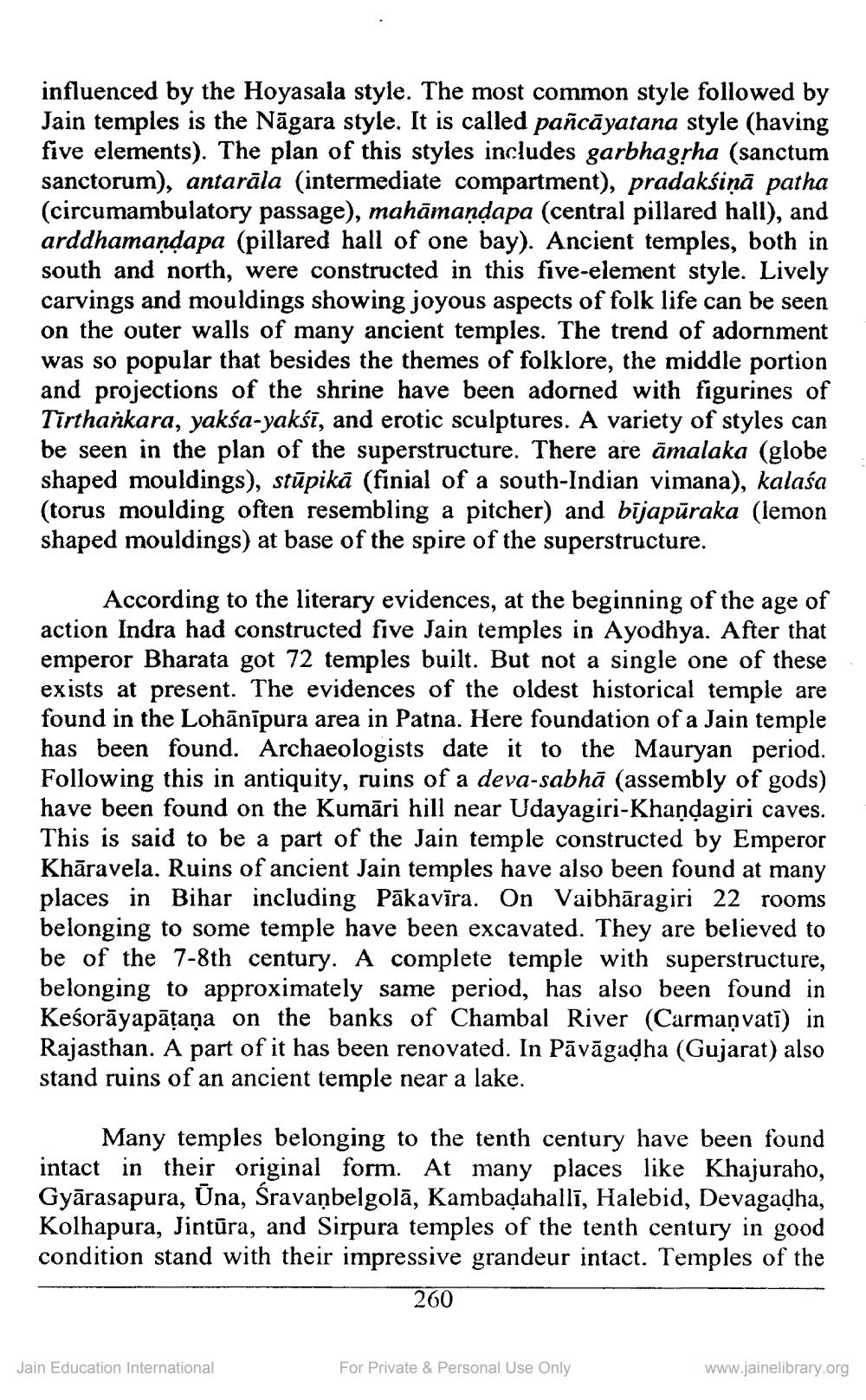________________
influenced by the Hoyasala style. The most common style followed by Jain temples is the Nāgara style. It is called pañcāyatana style (having five elements). The plan of this styles includes garbhagyha (sanctum sanctorum), antarāla (intermediate compartment), pradaksiņā patha (circumambulatory passage), mahāmandapa (central pillared hall), and arddhamandapa (pillared hall of one bay). Ancient temples, both in south and north, were constructed in this five-element style. Lively carvings and mouldings showing joyous aspects of folk life can be seen on the outer walls of many ancient temples. The trend of adornment was so popular that besides the themes of folklore, the middle portion and projections of the shrine have been adorned with figurines of Tirthařkara, yaksa-yakśī, and erotic sculptures. A variety of styles can be seen in the plan of the superstructure. There are āmalaka (globe shaped mouldings), stūpikā (finial of a south-Indian vimana), kalasa (torus moulding often resembling a pitcher) and bijapüraka (lemon shaped mouldings) at base of the spire of the superstructure.
According to the literary evidences, at the beginning of the age of action Indra had constructed five Jain temples in Ayodhya. After that emperor Bharata got 72 temples built. But not a single one of these exists at present. The evidences of the oldest historical temple are found in the Lohānīpura area in Patna. Here foundation of a Jain temple has been found. Archaeologists date it to the Mauryan period. Following this in antiquity, ruins of a deva-sabhā (assembly of gods) have been found on the Kumāri hill near Udayagiri-Khandagiri caves. This is said to be a part of the Jain temple constructed by Emperor Khāravela. Ruins of ancient Jain temples have also been found at many places in Bihar including Pākavīra. On Vaibhāragiri 22 rooms belonging to some temple have been excavated. They are believed to be of the 7-8th century. A complete temple with superstructure, belonging to approximately same period, has also been found in Keśorāyapāțaņa on the banks of Chambal River (Carmaņvati) in Rajasthan. A part of it has been renovated. In Pāvāgadha (Gujarat) also stand ruins of an ancient temple near a lake.
Many temples belonging to the tenth century have been found intact in their original form. At many places like Khajuraho, Gyārasapura, Ūna, Sravaņbelgolā, Kambaďahallī, Halebid, Devagadha, Kolhapura, Jintūra, and Sirpura temples of the tenth century in good condition stand with their impressive grandeur intact. Temples of the
260
Jain Education International
For Private & Personal Use Only
www.jainelibrary.org




